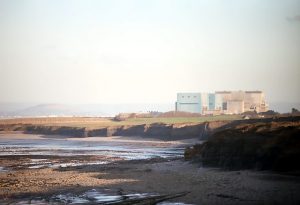The UK government has finally decided to go ahead with the new nuclear power station at Hinkley Point against the advice of many experts. David Kingman explains IF’s misgivings
The Conservative government has confirmed that it will go ahead with building Britain’s first new nuclear power station for a generation at Hinkley Point in Somerset, ending months of uncertainty surrounding whether the controversial proposal would ever see the light of day.
Throughout this period of uncertainty, IF has consistently stated its opposition to this scheme. Now that the government has reviewed the scheme before finally approving it, has anything changed which makes it a better option for meeting our future energy demands than it was originally?
A long and winding road
The nuclear power station is currently expected to go into service in 2025, and should be capable of supplying 7% of Britain’s electricity by the time it is fully operational. It is expected to cost £18 billion, of which two-thirds is being provided by the French energy firm EDF, who will design, build and operate the project, with the remaining £6 billion coming from China General Nuclear Power Corporation.
The project has taken a long and winding road to reach the point where it looks like it will finally be built. When the scheme was originally devised it was supposed to enter operation in 2018, whereas now it is not expected to do so until 7 years later (and even this timetable assumes that the project will not fall victim to the same technical hiccups which have delayed one of EDF’s other major new nuclear power stations, at Flamanville in France, which is three times over its original budget and six years behind schedule).
At various times during Hinkley Point’s convoluted genesis, both EDF and the British government have appeared to be on the verge of pulling out, only to eventually reaffirm their commitment to the project.
The wrong problems?
The most recent delay was caused by the new Conservative government’s decision to “pause” the project shortly after it came into office, ostensibly so that it could re-examine the national security implications of allowing a Chinese state-owned firm to have a controlling interest in such an important piece of national infrastructure.
However, little appears to have changed following this review, the end of which was signalled by the government’s decision to finally approve the project. The government has issued a statement in which it says it will ensure that it can prevent EDF from selling its stake in Hinkley without ministerial approval – and that the UK will take a special ownership share in future nuclear projects – but no meaningful changes were announced to the overall structure of the deal.
What was peculiar about this whole process of reviewing the Hinkley Point deal was that almost none of the main criticisms which have been levelled at the project were ever addressed by the government.
Indeed, the Hinkley Point deal is somewhat unusual in that it appears have attracted criticism from right across the political spectrum. Critics of the deal have included the majority of independent witnesses who gave evidence to parliament’s inquiry into new nuclear energy, the Institute for Government, the Institute of Economic Affairs, and IF – just some of the expert voices who’ve called for the deal to be scrapped.
As we argued in our Toxic Time Capsule, the biggest flaw in the Hinkley Point deal is that it forces taxpayers to buy the energy produced by Hinkley Point at a guaranteed price of £92.50 per megawatt hour (in 2012 prices) for 35 years, even though there is much evidence to suggest that alternative forms of energy will be cheaper, more reliable and cleaner during this period. As it stands, Hinkley Point will almost certainly be a poor deal for today’s and tomorrow’s taxpayers, and the government has missed its final opportunity to back away from it.
